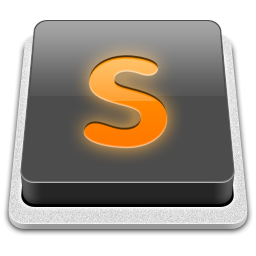Deepin 15: A Beautifully Crafted Linux Distribution for Everyone
Deepin OS represents a significant evolution in Linux distributions. Let me clarify—I might have exaggerated slightly with "revolutionary," but honestly, it's been a while since I've encountered a Linux distro that truly impressed me.
Specifically, Deepin 20 is outstanding. Its installation process is so intuitive that even someone with no technical background, like my grandmother, could handle it.
This is the third Linux distro I’ve reviewed recently, and by far the smoothest to set up and use right from the start. You can check out my previous reviews here:
- Linux Mint 20.1 Installation, Review, and Customization
- ReactOS as a Windows Alternative – Review and Installation
I first tried Deepin OS about two years ago, but back then I ran into installation hiccups and performance instability. Perhaps that was due to the fact that it had just transitioned to a relatively new Ubuntu base at the time? Although the version I used was labeled as stable, it wasn't a great experience.
Over its 17-year history, Deepin has changed its name and underlying system multiple times. It started in February 2004 as Hiwix 0.1, based on Morphix with the IceWM window manager. Then it became Hiweed Linux, switching to the Xfce desktop and a Debian foundation.
By version 2.0, Hiweed Linux had adopted the LXDE desktop environment and an Ubuntu core in 2008. They continued using Ubuntu until Deepin 2014.3, experimenting with different desktop environments along the way.
In 2013, Deepin introduced its own desktop environment—DDE, or Deepin Desktop Environment—which debuted in version 4.0. That was also the year I first tried Linux, though I wasn’t fully convinced at the time.
The strengths of Deepin lie in its rich set of features centered around DDE. The highlight of Deepin 20 is definitely the refined DDE, paired with its switch from Ubuntu to a Debian Buster base. The distro also now supports over 30 languages during installation, making it more globally accessible.

Deepin tailors the desktop experience based on your system specs. Additional sound and animation effects enhance the user experience. Deepin also partnered with Intel to integrate the Crosswalk Project, allowing web apps to run natively. Other enhancements include the Linux 5.11 kernel, migration from HTML5/WebKit to Qt, and the adoption of dde-kwin as the new window manager.
System changes include Bash replacing Zsh as the default shell, Systemd taking over from Upstart (similar to Ubuntu 20.04), and GCC 8.3.0 as the default compiler.
Key features of the Deepin Desktop Environment include a customizable panel with two modes—Efficient and Normal—a centralized Control Center, and a suite of native applications such as Deepin Music Player.

Also included are Deepin Media Player, a modern Deepin Software Center, Deepin Terminal, Deepin Screenshot, Deepin Cloud for printing, and a new Deepin User app for submitting bug reports or feature requests.

Additional features of Deepin 20/DDE include pre-configured hot corners, a redesigned multitasking view, a dynamic app menu (sorted by category, install date, or usage frequency), WPS Office, Gdebi Package Installer, beautiful wallpapers, Steam, Crossover (for Win32 apps), and Chrome as the default browser.



The screenshots speak for themselves—installation is so straightforward that no step-by-step guide is necessary. Still, after downloading the Deepin ISO, you’ll need a tool to write it to a USB drive. Options include Unetbootin or the built-in Deepin Boot tool (found inside the ISO). You can extract it using WinRAR, 7-Zip, or Gzip on Linux.
For dual-boot setups, create a dedicated partition for Deepin before starting the installation.
Installing Deepin Linux













Assuming your installation went smoothly, you should be all set. But if you ran into any issues during or after installation, feel free to leave a comment below, and I’ll be happy to assist.
The above is the detailed content of Deepin 15: A Beautifully Crafted Linux Distribution for Everyone. For more information, please follow other related articles on the PHP Chinese website!

Hot AI Tools

Undress AI Tool
Undress images for free

Undresser.AI Undress
AI-powered app for creating realistic nude photos

AI Clothes Remover
Online AI tool for removing clothes from photos.

Clothoff.io
AI clothes remover

Video Face Swap
Swap faces in any video effortlessly with our completely free AI face swap tool!

Hot Article

Hot Tools

Notepad++7.3.1
Easy-to-use and free code editor

SublimeText3 Chinese version
Chinese version, very easy to use

Zend Studio 13.0.1
Powerful PHP integrated development environment

Dreamweaver CS6
Visual web development tools

SublimeText3 Mac version
God-level code editing software (SublimeText3)
 System requirements to install linux
Jul 20, 2025 am 03:49 AM
System requirements to install linux
Jul 20, 2025 am 03:49 AM
Linuxcanrunonmodesthardwarewithspecificminimumrequirements.A1GHzprocessor(x86orx86_64)isneeded,withadual-coreCPUrecommended.RAMshouldbeatleast512MBforcommand-lineuseor2GBfordesktopenvironments.Diskspacerequiresaminimumof5–10GB,though25GBisbetterforad
 How to Securely Erase a Hard Drive on Linux
Jul 24, 2025 am 12:08 AM
How to Securely Erase a Hard Drive on Linux
Jul 24, 2025 am 12:08 AM
Confirm the target hard disk device name (such as /dev/sda) to avoid accidentally deleting the system disk; 2. Use sudoddif=/dev/zeroof=/dev/sdXbs=1Mstatus=progress to overwrite the zero value in full disk, which is suitable for most scenarios; 3. Use sudoshred-v-n3/dev/sdX for three random data overwrites to ensure that it cannot be restored; 4. Optionally execute sudobadblocks-wsv/dev/sdX for destructive write tests; finally use sudohexdump-C/dev/sdX|head to verify whether it is all zero and complete safe erasing.
 how to add a user in linux
Jul 21, 2025 am 03:32 AM
how to add a user in linux
Jul 21, 2025 am 03:32 AM
Add useradd or adduser commands commonly used by users in Linux. 1. When using useradd, you need to manually set the password and home directory. Add the -m parameter to create the home directory; 2. You can specify the shell, group and UID through parameters such as -s, -G, and -u; 3. Adduser is an interactive command, suitable for novices to automatically complete the configuration; 4. Pay attention to permissions, username uniqueness and home directory permissions; 5. Userdel can be used to delete users and home directory by mistake. Mastering these key points allows you to manage users efficiently and securely.
 How to get help for a command in Linux?
Jul 17, 2025 am 12:55 AM
How to get help for a command in Linux?
Jul 17, 2025 am 12:55 AM
There are four ways to obtain command help in Linux: First, use --help to view basic usage, which is suitable for quickly understanding common options and parameters of commands; second, use man to view the complete man page, providing detailed command descriptions and examples; third, use info to view structured help, which is suitable for information navigation of complex commands such as gcc and make; fourth, refer to network resources and communities, such as Linux China, StackOverflow and other platforms to obtain Chinese materials or solve specific problems. It is recommended for beginners to master it step by step from --help and man.
 How to Install a Lightweight Bodhi Linux Distro
Jul 15, 2025 am 09:09 AM
How to Install a Lightweight Bodhi Linux Distro
Jul 15, 2025 am 09:09 AM
Bodhi GNU/Linux is a distribution rooted in Ubuntu, specifically crafted for desktop computing, and celebrated for its sleek and efficient design. The core philosophy of this system is to offer a minimalistic base that users can enhance with their pr
 How to check my Linux system information and version?
Jul 26, 2025 am 02:59 AM
How to check my Linux system information and version?
Jul 26, 2025 am 02:59 AM
If you want to know the Linux system information and version, you can use the following steps: 1. Use lsb_release-a to view the distribution information; 2. View the /etc/os-release file to obtain version details; 3. Use uname-r or uname-mrs to confirm the kernel version and system architecture; 4. Run lscpu, free-h or dmidecode (requires root permissions) to obtain hardware information. The above method is applicable to different distributions, and some commands may require installation or permission adjustment.
 Lynis 2.5.5 Released - Security Auditing and Scanning Tool for Linux Systems
Jul 15, 2025 am 09:20 AM
Lynis 2.5.5 Released - Security Auditing and Scanning Tool for Linux Systems
Jul 15, 2025 am 09:20 AM
Lynis is an open-source and much powerful auditing tool for Unix/Linux-like operating systems. It scans the system for security information, general system information, installed and available software information, configuration mistakes, security is
 Different Ways to Use Column Command in Linux
Jul 17, 2025 am 09:20 AM
Different Ways to Use Column Command in Linux
Jul 17, 2025 am 09:20 AM
Have you ever found yourself needing to process CSV files and generate output in a structured table format? Not too long ago, I was dealing with a messy file that wasn't properly formatted. It had excessive spaces between each column, and I needed to







